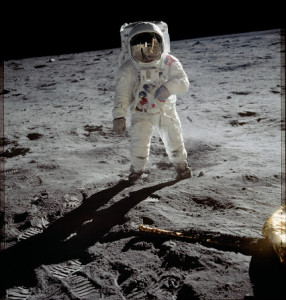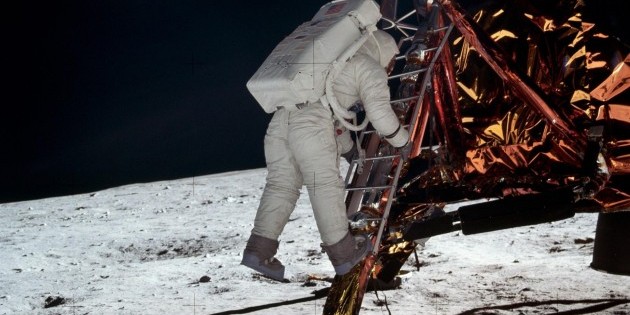HOUSTON — Monday, July 20, marked the 46th anniversary of the first moon landing, a day that space buffs everywhere still celebrate.
More than a half billion people watched the televised first moonwalk where Neil Armstrong uttered the now-famous words,” That is one small step for man, one giant leap for mankind.”
 Astronauts Armstrong, Edwin “Buzz” Aldrin and Michael Collins left Earth July 16 from Cape Kennedy in Florida. Armstrong and Aldrin landed on the moon a few days later on July 20. The men spent 21 hours, 36 minutes on the moon before joining back up with Collins in the command module. The mission accomplished the objective set by President John F. Kennedy in 1961, which was to land a man on the moon the return to Earth.
Astronauts Armstrong, Edwin “Buzz” Aldrin and Michael Collins left Earth July 16 from Cape Kennedy in Florida. Armstrong and Aldrin landed on the moon a few days later on July 20. The men spent 21 hours, 36 minutes on the moon before joining back up with Collins in the command module. The mission accomplished the objective set by President John F. Kennedy in 1961, which was to land a man on the moon the return to Earth.
The Apollo missions in the late 1960s and early 1970s captivated the world. Arizona still has a strong connection to the moon with ongoing research.
High-resolution cameras orbiting the moon on the Lunar Reconnaissance Orbiter are operated by Arizona State University professor Mark Robinson.
In 2012, NASA announced the cameras had spotted five flags planted by astronauts. All the flags but one were still standing. The exception was the flag for Apollo 11, the historic first human moon landing in 1969.
The lack of an Apollo 11 flag is consistent with Aldrin’s memory of the famous mission. Aldrin recalled the flag blew over from the rocket blast when astronauts left the surface.
NASA’s Apollo program included multiple launches in the late 1960s and early 1970s and was designed mainly to land humans on the moon and bring them back to Earth safely.
Signs of the missions are still visible on the moon’s surface. Photos taken by the lunar orbiter show tracks made by lunar rovers and equipment left behind, including backpacks jettisoned by astronauts.











